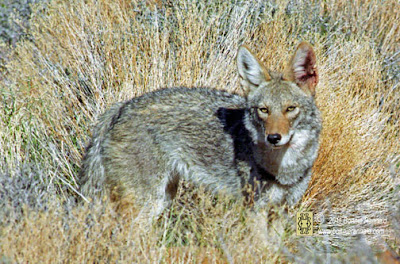Desert's Hidden Beauty
Part 2 of my Desert Wildflowers Series focuses on the desert's most unique plants, the cactus.
Cacti are perhaps the most interesting and adaptable of the desert plants. From the huge Saguaro that can reach 40 feet (2m) to the 6 inch (15.24cm) tiny Pincushion, cacti have developed some unique ways to endure life in the extreme hot dry desert.
In stead of leaves, a cactus has developed needles that serve several purposes in its survival: protection from being eaten by herbivores, shade from the sun and a system for channeling rain water down to its roots where it can be more easily absorbed. Cacti have developed other adaptations that include a waxy coating over the skin called glaucus bloom which keeps moisture from evaporating, plus a long root system that reaches deep in the soil where water can be soaked up and stored in the plant.
The following are a few of my favorite cacti that I come across most often in the desert.
The Barrel Cactus is one of the largest in North America, reaching from 3-10' (90-300cm) in length and can be found in the Mojave, Sonoran and Chihuahuan Deserts where it grows in washes and gravely slopes. The yellow flowers that bloom on top of the large barrel-shaped stem are small in size compared to other cacti flowers. The Barrel Cactus has served many purposes for the Native Americans. The spines were used as needles, the young flowers were boiled and eaten like cabbage or made into a drink, candy was made from the pulp, and the barrel became a cooking pot after it was scrapped out and filled with hot stones. For survival, the pulp can be chewed for food and water. The Barrel is the latest cactus to bloom, with a short period lasting only from July and August.
The Pincushion Cactus is so tiny, reaching less than 6" tall (15cm), it can easily be stepped on and often goes unnoticed. Its barrel shaped tube may never extend above the gravelly, dry areas or ledges where it prefers to grow. The Pincushion's 1-2" (2.5-5cm) flowers are larger in ratio to its smaller size and a favorite food source for bees, birds and rodents, when in bloom from May through June.
The Prickly Pear can be found in the Mojave Desert around dry rocky areas where it may grow to a height of 1 to 7 feet (30.48-213.36cm). Its brilliant yellow flowers bloom from May through June. This cactus has pads rather than branches that store water and are edible as a vegetable known as "Nopalito". The fruits are also edible and sold in stores under the name "tuna". For protection, the prickly pear family of cacti are armed with clusters of fine, tiny barbed spines called glochids, which are difficult to see, and even more difficult to remove from the skin.
A member of the Prickly Pear family, the 6-12" (15-30cm) Beavertail Cactus, can be found on rocky slopes in the Mojave and Sonoran Deserts.
Its gray-green jointed stems are flat and wide, resembling the tail of a beaver. Blooming from March to June, the brilliant reddish flowers give way to an oval fruit which is full of seeds.
The Cholla have been known to reach 15 feet (4.57m) in height and appear more like a shrub with segmented stems. The stems store water for the cactus and have sharp spines that are covered in papery sheaths, a native of the Sonoran Desert, the Cholla blooms during the spring from March through June.
The Hedgehog Cactus is so named because it resembles a hedgehog with its small barrel-shaped stems that grow to about one foot (30cm) in length. One of the earliest flowers to bloom in the spring, the Hedgehog is found on sandy slopes, flats and rocky hillsides. The two inch long (5cm) scarlet red flowers close at night and reopen in the morning to attract hummingbirds which are the main pollinators of the plant. To get to the nectar, the hummingbird must carefully place its entire head to the base of the flower which then becomes coated with pollen. The fruits are edible once the spines have been removed.
As with all wildflowers growing in the desert, cacti should never be picked or harvested. Any disruption may destroy an entire ecosystem that will take years to grow back. All ecosystems in the desert are very fragile and are interconnected and interdependent. If you are interested in tasting the fruits and vegetables from the various cacti, many are available commercially in stores. Furthermore, in National and State Parks it is illegal to pick flowers and if caught, you may be subject to a fine.
What
an exciting and interesting photo-adventure this day has been. I love
it when I am drawn to an area and not knowing what to expect I get
treated to new experiences.
Sign up and follow my blog to see where my next photo-adventure will be!
Photography places me in the moment where I can share that moment in time. It becomes a life story as represented by my interaction with the scene. The happiness and beauty or the sorrow and strife; how I focus leaves a lasting impression that might touch the viewer on a spiritual level.
"Reflecting Nature's Artistry"
No images on this blog are within Public Domain or are available for free download.
All rights reserved, world-wide and images protected by Digital
Millennium Copyright Act (DMCA). All photography, graphics, text,
design, and content is copyrighted by Bonnie Rannald and should not be
copied, down-loaded, transferred and re-created in any way without the
express consent, in writing to Bonnie Rannald.
For information on Bonnie Rannald licensed, right-managed images, please
submit a written request.




































